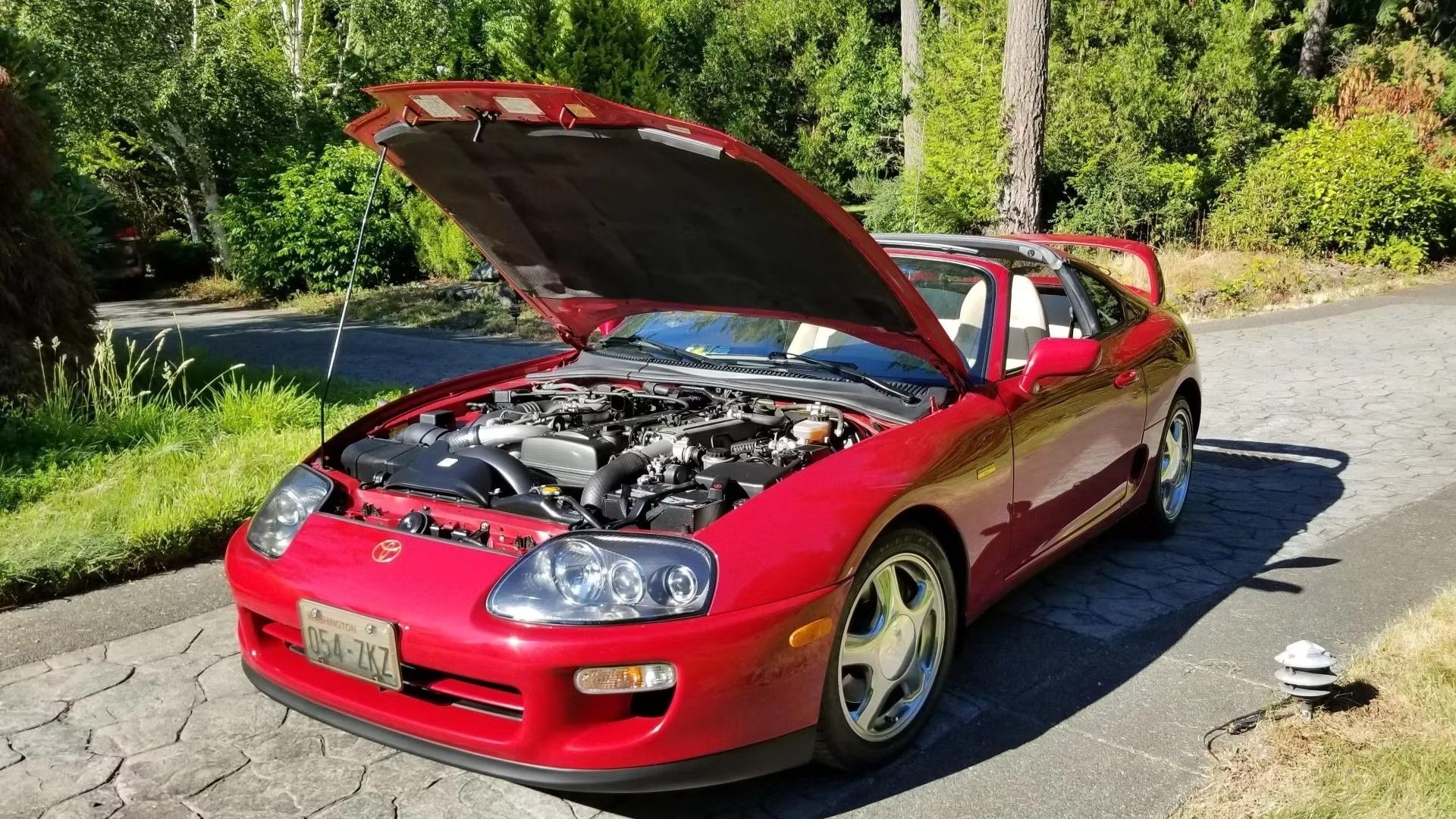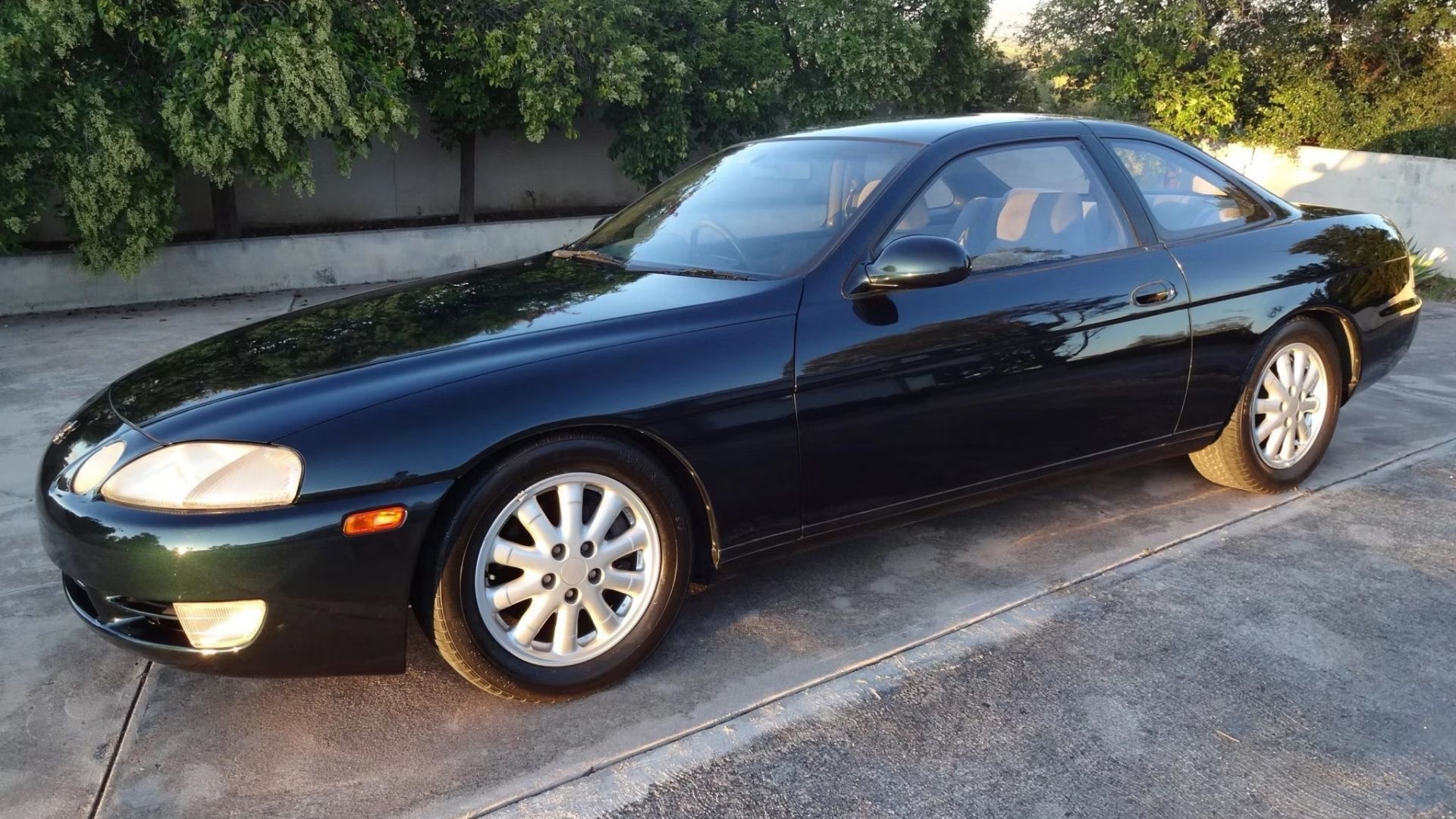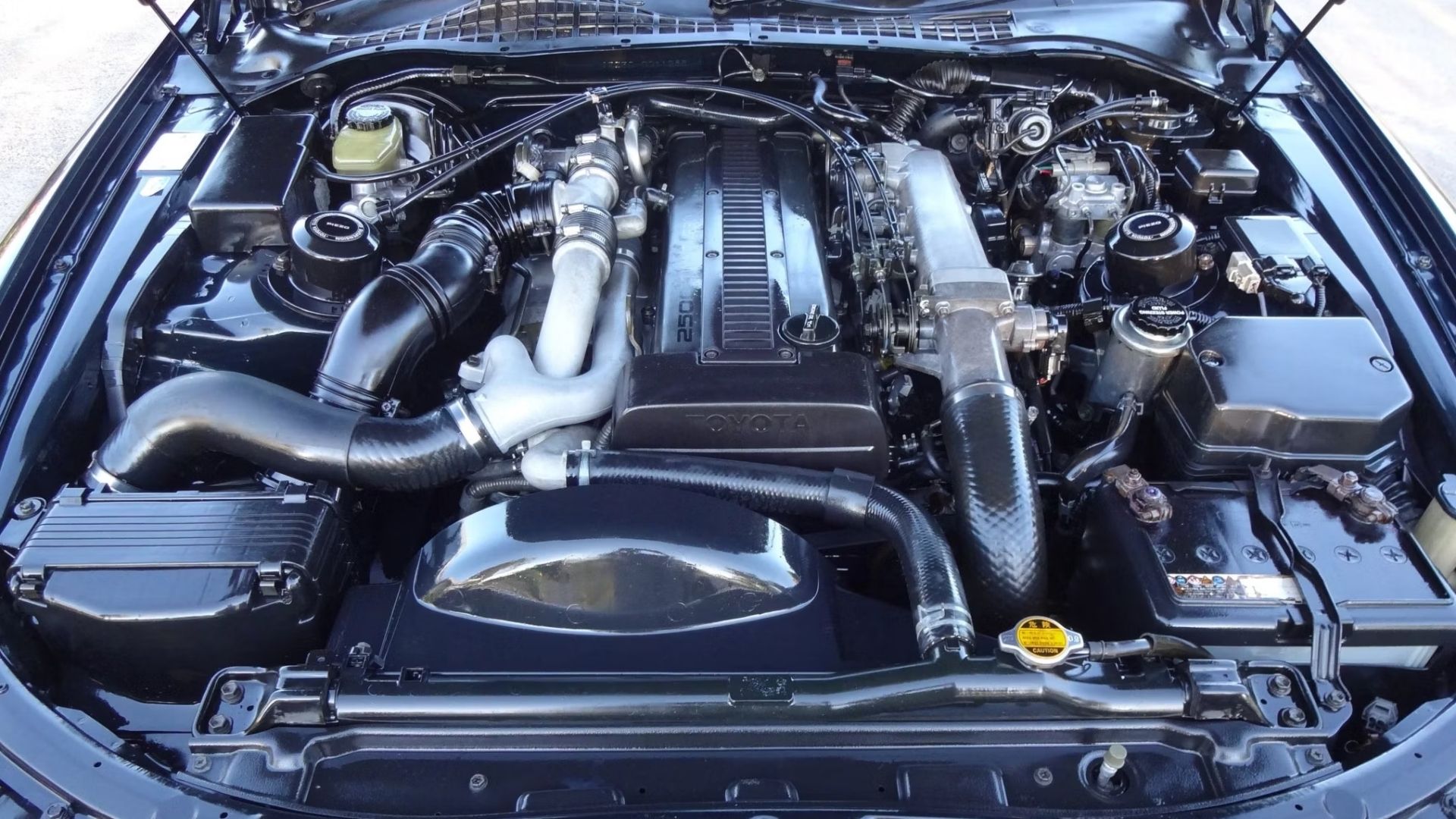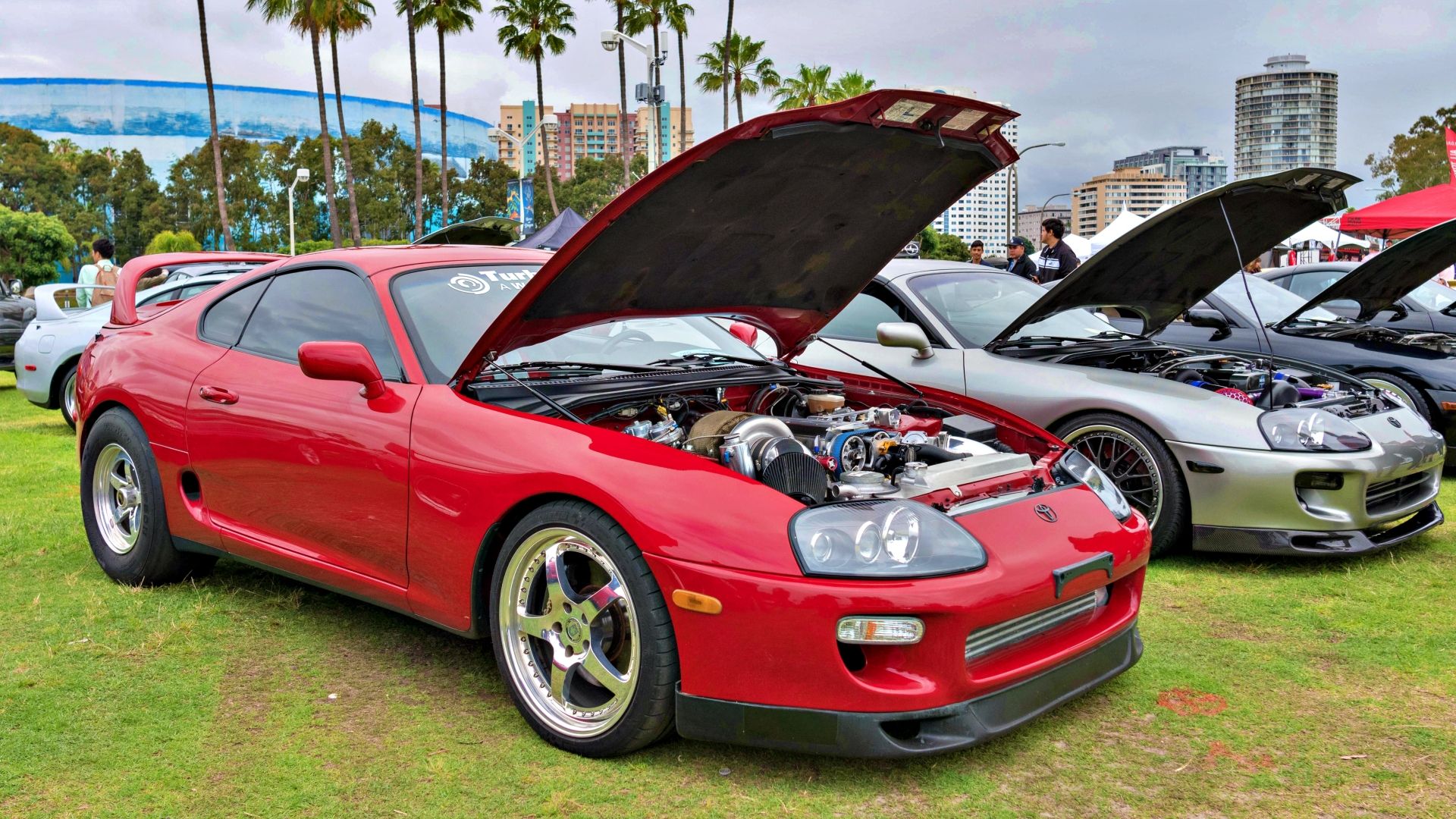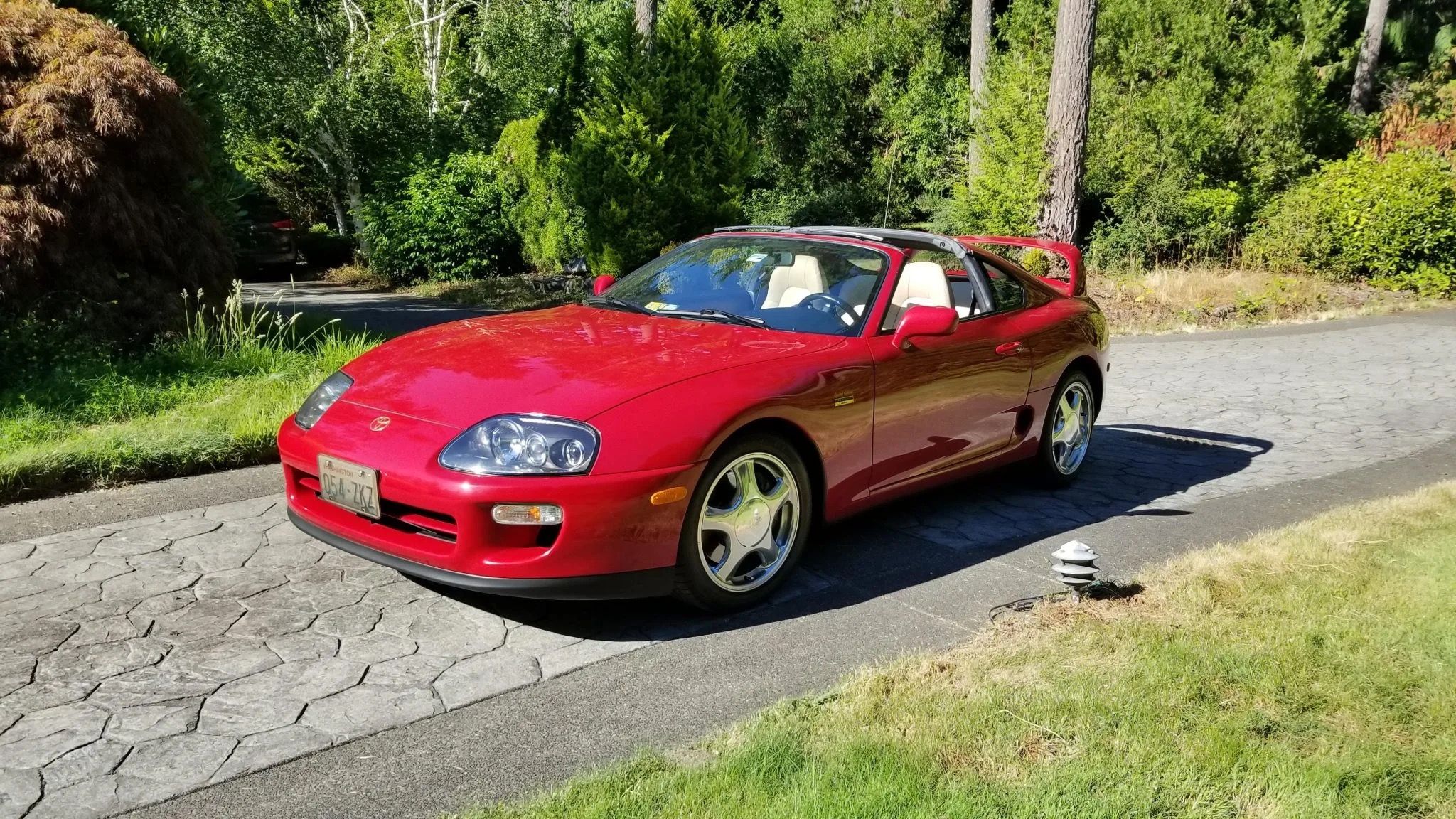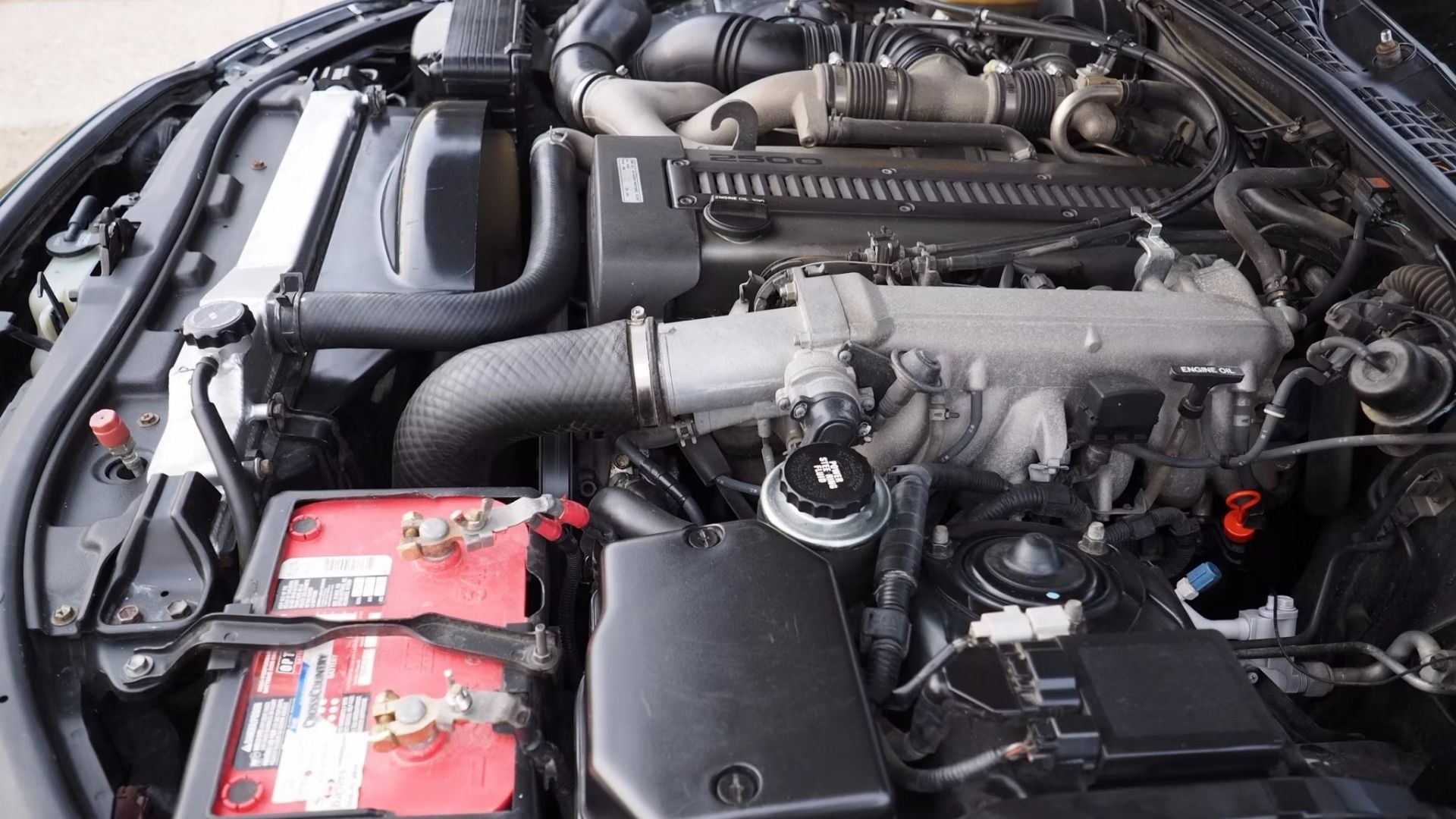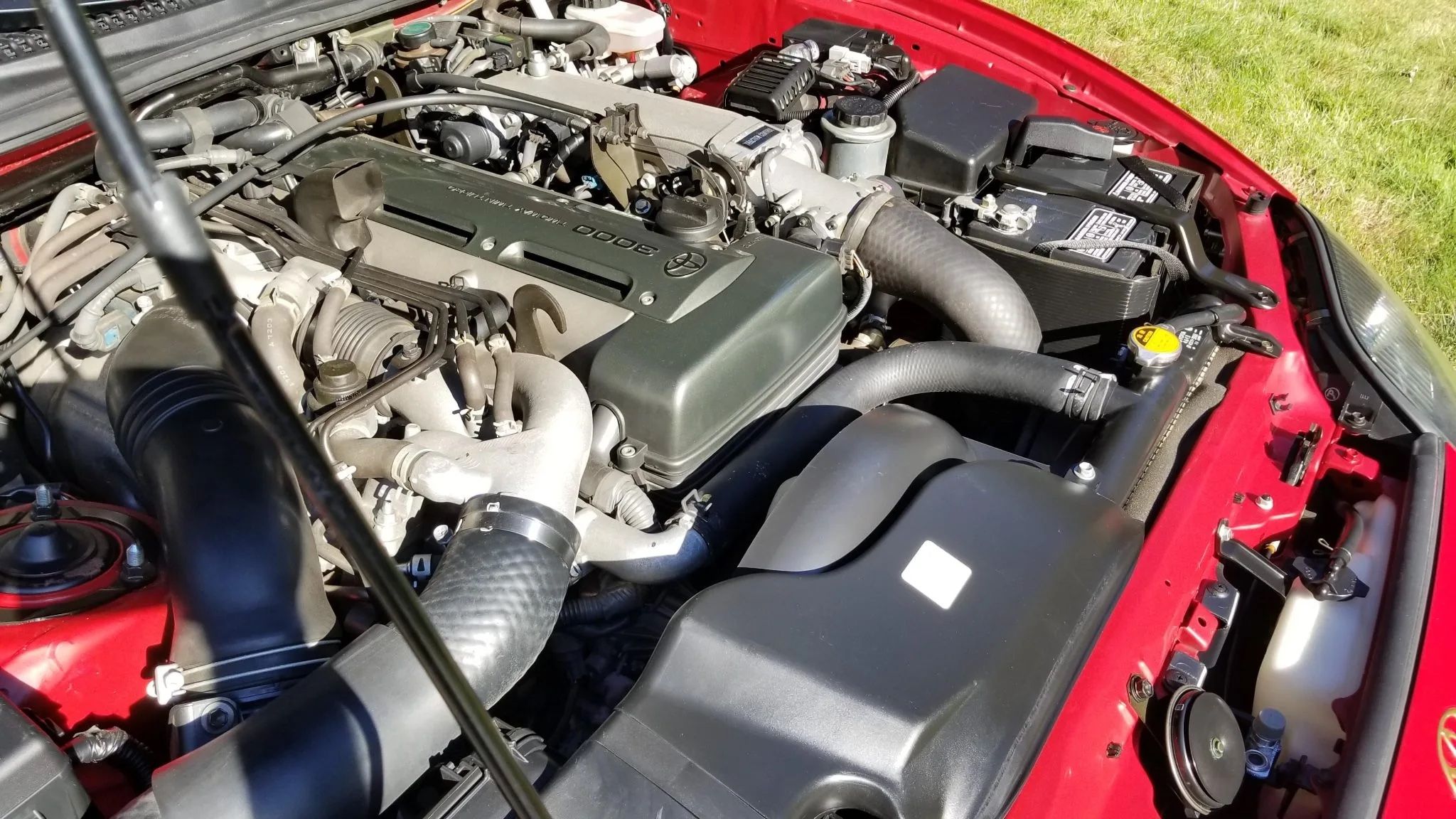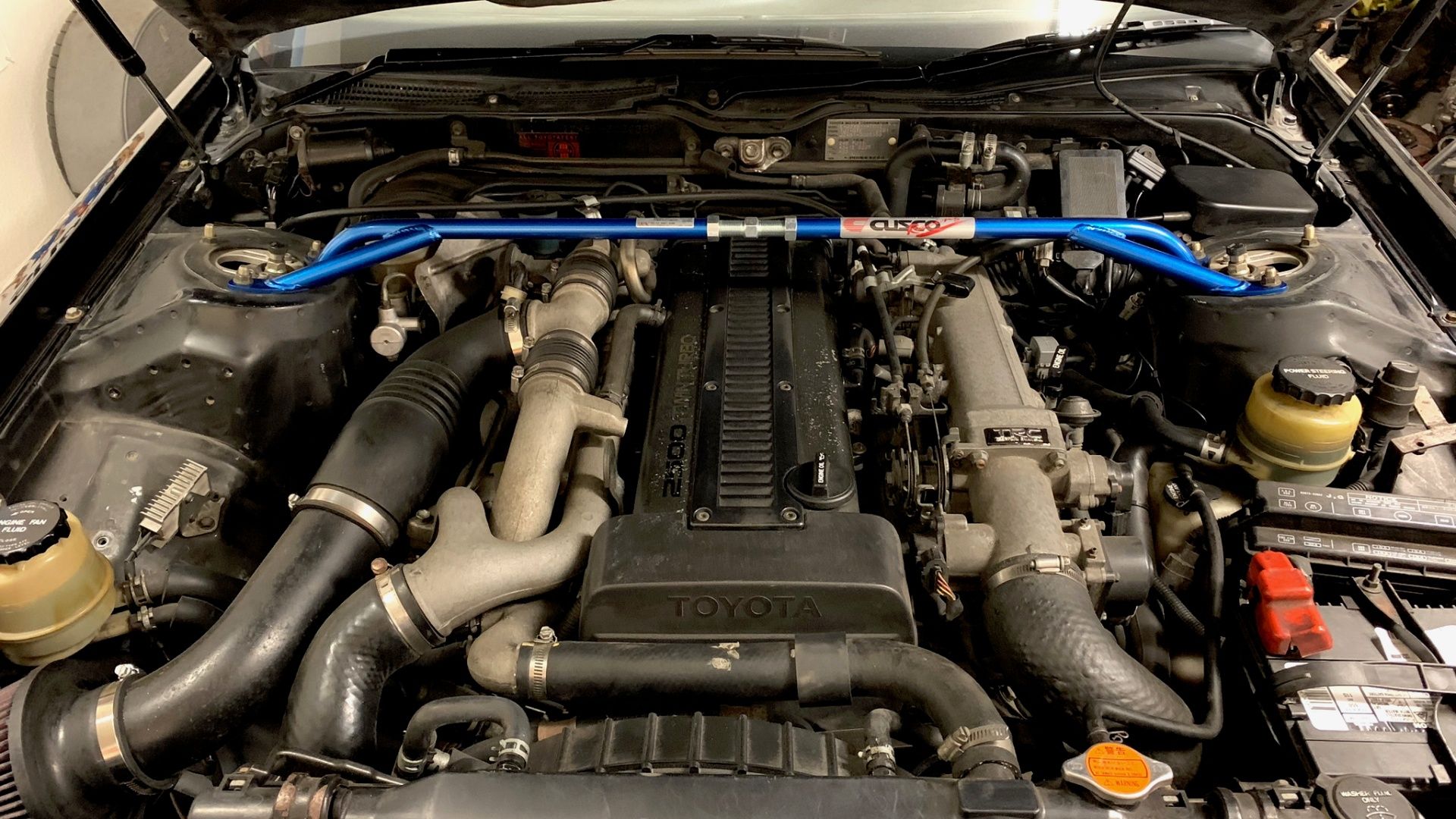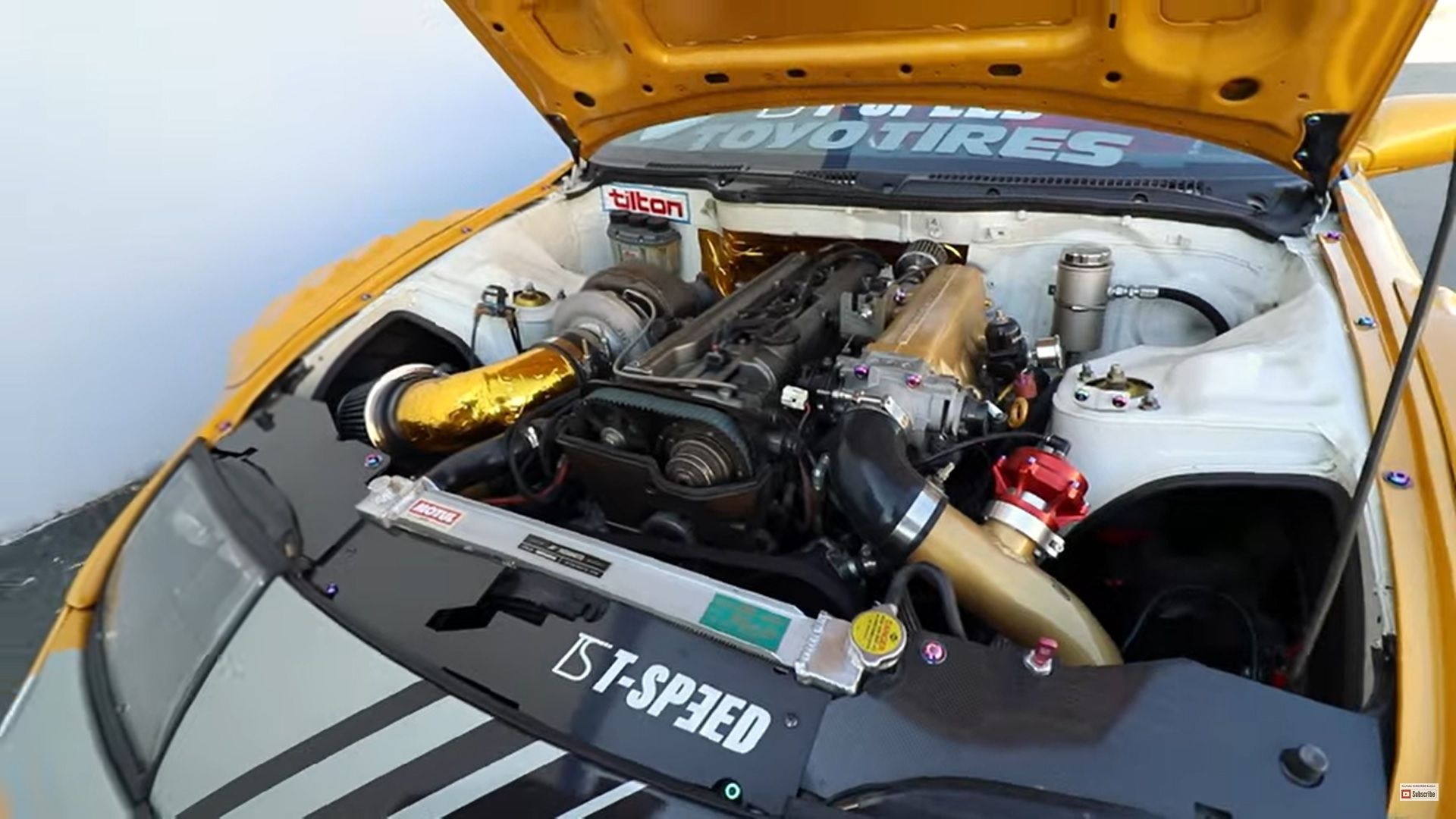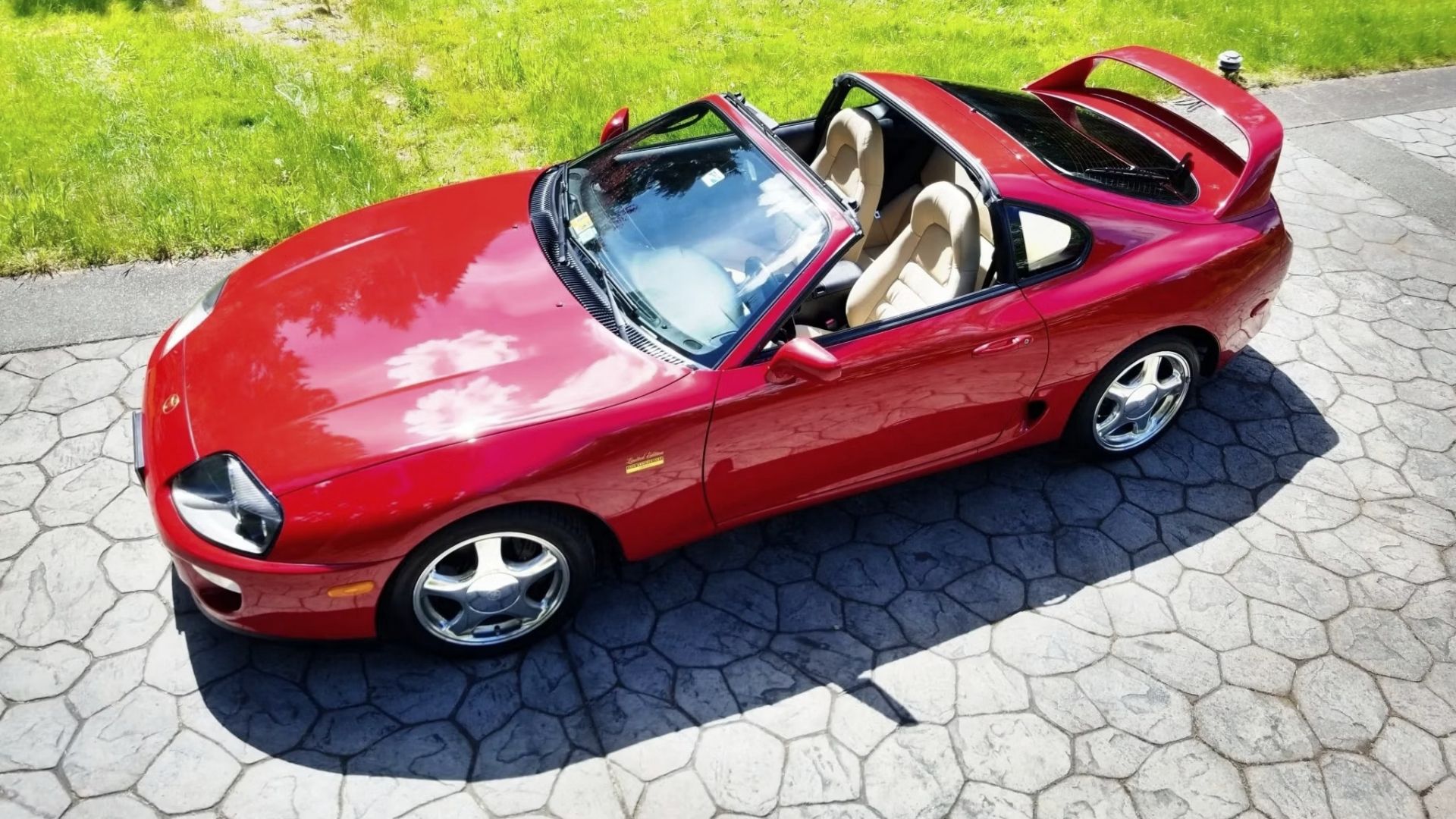Among the many engines that Toyota has built, two stand out. Both of them were conceived in the early 1990s and would go on to power some of the most recognizable Japanese cars ever made. We are talking about the 1JZ and 2JZ engines.
Although the technology behind them is now over 30 years old, they are still some of the most popular engines used in builds - like this 2JZ-swapped Dodge Charger, for example. While it's true that the 1JZ and 2JZ differ in displacement (2.5-liters vs. 3.0-liters, respectively), there's a lot more than displacement that separates these two iconic engines.
Toyota 1JZ-GTE History And Specifications
The 1JZ engine actually came out first and was first put in the Soarer GT (JZZ30), also known as the Lexus SC on other continents. However, we will be focusing on the top-of-the-line turbocharged models. The 1JZ GTE is actually fairly similar to its predecessor – the 7M GTE, but without all the issues that plagued it. Essentially, it was the 7M done right.
The 1JZ is a 2.5-liter inline-six engine with double overhead cams (DOHC) and four valves per cylinder. It has an 86 mm (3.39 in) bore and 71.5 mm (2.81 in) stroke, which means it has an over-square design. This typically makes an engine more rev-happy than an under-square unit. Later models also got Toyota’s variable valve timing (VVT-i). In its 1JZ GTE form, it packs twin parallel turbochargers, fed through either a side-mount or front-mount air-to-air intercooler. It also has a reduced compression ratio of 8.5:1, as opposed to the normally-aspirated version’s 10:1.
With a stock boost of 9 psi (0.62 bar), the 1JZ GTE produced an advertised 280 horsepower (206 kW) at 6,200 RPM and 279 pound-feet (378 Nm) at 2,400 RPM. One of the most notable cars powered by the 1JZ GTE is the Toyota Chaser (JZX100), widely regarded as a four-door sleeper sedan. In stock trim, it’s able to do the 0-62 mph (100 km/h) sprint in around 5.6 seconds.
Cars powered by the 1JZ GTE include the Toyota Chaser / Cressida (JZX81, JZX90, JZX100, JZX110), Toyota Soarer (JZZ30), Toyota Supra Mk III (JZA70, but only in Australia and Japan), Toyota Verossa, Toyota Crown (JZS170), Toyota Mark II.
2JZ-GTE History And Specifications
Contrary to popular belief, the 2JZ is nearly identical to the 1JZ. The main difference is the displacement, which is now 3.0 liters instead of the 1JZ’s 2.5 liters. This is achieved through a longer stroke of 86 mm (3.39 in). The cylinder bore is the same as the 1JZ’s 86 mm (3.39 in), which means that the 2JZ has a square design, which means that the bore and stroke are equal. This translates into a better equal medium between low-end torque and high-end horsepower.
This makes for a broader torque band, compared to the 1JZ. This is further emphasized by the 2JZ’s twin-turbo setup. While the 1JZ has a parallel twin-turbo setup, the 2JZ features a twin sequential turbo setup. While the 1JZ features one turbo for every three cylinders, in the 2JZ both turbos power all six cylinders. However, the first turbo kicked in at very low RPMs for that low-end torque, while the second one spooled further up in the rev range, giving a more continuous shove.
In its 2JZ GTE version, the mighty inline-six produces up to 330 horsepower (242 kW) at 5,600 RPM and 324 pound-feet (440 Nm) at 4,800 RPM. The Toyota Supra Mk IV is the most notable car powered by this engine and is able to hit 62 mph (100 km/h) in just 4.9 seconds.
Cars powered by the 2JZ GTE are the Toyota Aristo (JZS147, JZS161, Japan-only), and Toyota Supra JZA80.
Which Is Better: 1JZ Or 2JZ?
An important note is that contrary to popular belief, the 1JZ and 2JZ are pretty much equally as strong. Moreover, you might be surprised to know that they respond very similarly to upgrades. However, if we have a 1JZ and a 2JZ modified similarly and producing a similar power, the 2JZ will have a better response because of its larger displacement.
This will be even more obvious with single-turbo conversions since a single big turbo takes more time to spool than two smaller turbos. There is a direct correlation between engine displacement, turbo size, and drivability. Therefore, at equal power levels and with similar modifications, the 2JZ will be more responsive, as it has more displacement power.
In reality, the stock bottom end of the 1JZ can take around 650-700 horsepower reliably, while the 2JZ can take 800. If we turn this into simple math, we can see that the 1JZ’s bottom end is good for roughly 260 horsepower per liter, while the 2JZ’s bottom end is good for around 266 horsepower per liter. Obviously, there are builds out there that are pushing way more horsepower than the numbers here. Nevertheless, their cast-iron bottom ends are some of the strongest ever made, even today.
As far as applications go, the 1JZ’s more rev-happy character makes it perfect for drift builds, since staying in the upper part of the rev range is crucial to maintaining a slide, as well as making crisp transitions. The 1JZ’s shorter stroke means it loves to stay in high revs, but it lacks low-end torque. A shorter stroke also means it takes more time to spool the turbocharger.
The 2JZ, on the other hand, with its longer stroke and sequential twin-turbo setup, has both low-end torque and a wide torque band, almost mimicking that of a big normally-aspirated unit. This alone makes it much more compliant for street use. Strangely enough, because of the longer stroke, the 2JZ is not as reliable when staying at high RPMs for a prolonged time.
Parts and shops specializing in these engines are plentiful. The 1JZ is a bit more budget-friendly. There is an obvious trend when it comes to building both these engines. Most 1JZ builds are drift cars, while most 2JZ builds are crazy 10 or even 9-second drag cars. Both engines have their pros and cons, but if done right they can both dish out some big numbers, while still retaining most of their awesome reliability.
1JZ Reliability And Problems
The 1JZ is generally known to be a very stout unit, capable of big power, but that doesn't mean it's without its weaknesses. The water pump is one thing you have to watch out for in a 1JZ engine. This is a problem typical for BMW straight-six engines, but we also see it here. The main reason for a failed water pump on a 1JZ is the plastic impeller, which is known to be short-lived. Early versions of the engine can also give problems with the VVTi system, causing rough engine idle, misfire, and knocking sounds from the engine head. Ignition coils are also known to go occasionally.
The most reliable version of the engine is considered to be the 1JZ-GE, which is a non-VVTi, naturally-aspirated version. With just 170 horsepower (125 kilowatts) at 6,000 RPM and 173 POUND-FEET (235 nM) AT 4,800 RPM, it's not the best starting point if you are looking to make big power. The good thing is that even VVTi versions of the 1JZ engine are non-interference engines, so the pistons and valves won't be in contact if a major failure occurs. The longevity of the 1JZ is well over 200,000 miles (322,000 km), but as with all JDM performance engines, finding a good, unmolested one is difficult.
2JZ Reliability And Problems
The 2JZ is considered one of the most over-engineered Japanese engines, which is the main reason for its popularity in high-horsepower builds. As with all engines, however, the 2JZ is not a perfect engine. And while even modified examples are known to be extremely reliable, it really depends on how far you want to push the stock hardware. Up to 450 wheel horsepower, the 2JZ is still relatively under-stressed, and you can still utilize the OEM hardware.
JDM versions of the 2JZ GTE feature turbochargers with ceramic wheels, known to fall apart under heavier loads. As with the 1JZ, you have to watch out for the 2JZ's ignition coils, which can cause a misfire, and the water pump, which features a plastic impeller, is known to have a short lifespan. VVTi versions of the 2JZ can also suffer from bad actuators. Again, the symptoms would be similar to the 1JZ engine - rough idle, unpleasant noises from the engine head, and misfire. With the right maintenance, a 2JZ can easily last over 300,000 miles (480,000 km).
2JZ Must-Have Upgrades
The 2JZ is capable of immense power, but not without changing some key parts with stronger equivalents. High-horsepower builds require some beefier internals and accessories in order to stay reliable. Components related to the timing as well as the crankshaft damper pulley need to be upgraded as they are a known weak point when you near the 700-wheel-horsepower range. Depending on what camshafts you have opted for, you may have changed the 2JZ from non-interference to interference design, due to the altered lift and duration. Note: 2JZ engines with VVTi are interference engines by default.
As Tuner Test Drive explains (in the video above), at 700-wheel horsepower, a properly-routed oil catch-can is needed in order to prevent the front main seal from giving out. When it comes to four-digit horsepower figures, a full, forged rotating assembly is an absolute must as the 2JZ's stock connecting rods and bearing caps are a known weak spot. To get the most out of a 1,000+ horsepower 2JZ, the stock intake manifold should be replaced with a less-restrictive one. With all that done, a 2JZ will reliably make four-digit figures all day long.
The Fastest 1JZ-Powered Car
The 1JZ's popularity means tuners from all over the world want to get their hands on one. The engine may be Japanese, but we have seen on numerous occasions how it's powering other vehicles, it wasn't originally meant to be in. We scoured the internet for the fastest car to feature Toyoa's 1JZ engine is from Australia, and it's a Ford Capri.
The car is built with parts from an Australian tuner, Goleby's Parts. Thanks to a fully-built setup with a big, single turbo, the Capri is pushing over 43 pounds of boost, good for more than 950 horsepower. In the lightweight Capri, this is good for a 7.90-second quarter-mile run at over 172 mph (277 km/h).
The Fastest 2JZ-Powered "Car"
You may have noted the quotes in the title and that's because the fastest 2JZ-powered car is not a car in the normal sense of the word. It's called the Land Speed Streamliner and in August 2021, at the Bonneville Speed Week, it made history.
The narrow-body, jet-fighter-looking land speeder, is powered by a fully-built 2JZ with a massive, Garrett GTX5533R single turbo. Mated to a GM Turbo 400 transmission, the ground-bound, red rocket managed an average speed of 316.299 (509 km/h), officially making it the fastest 2JZ-powered car in the world.
Exhaust Sounds
As the engines are very similar, they also sound similar. However, the 1JZ’s more rev-happy character gives it a more high-pitched sound. On the other hand, the 2JZ’s torquey character and longer stroke, combined with more displacement, give it a deeper, throatier note.
As you well know, changing parts like the intake manifold or exhaust system could dramatically alter an engine's tune. As the 1JZ and 2JZ are both tuners' delights, finding a car with these engines that aren't modified is increasingly difficult. Which one sounds better, depends entirely on your preference and there are plenty of videos to help you decide.
How To Choose Between The Toyota 1JZ And 2JZ
Both engines are among the most reliable and over-engineered engines ever made. Being inline-six, they are also some of the smoothest units out there. Which one is right for you depends mostly on the application and your budget. The 1JZ loves to rev high and is perfect for drifting. In addition, its stock bottom end can push almost as much power as the much bigger 2JZ. It’s also more affordable. The 2JZ, on the other hand, is considered by many to be the king of all inline-six engines.
It has a much broader torque band and more displacement, making it better for street driving. It's also able to withstand much higher power levels with the right parts. Sound-wise, it’s the 1JZ’s high-pitch note vs the 2JZ’s throaty deep sound. Both units have an immense following and aftermarket support, and even to this day are responsible for some of the most epic builds the world has ever seen. If crazy horsepower is on your mind, however, don’t be so quick to dismiss the 1JZ in favor of the bigger 2JZ. You only need to see Smokey Nagata’s Top Secret V-12 Supra, which has two merged 1JZ engines in the front.

